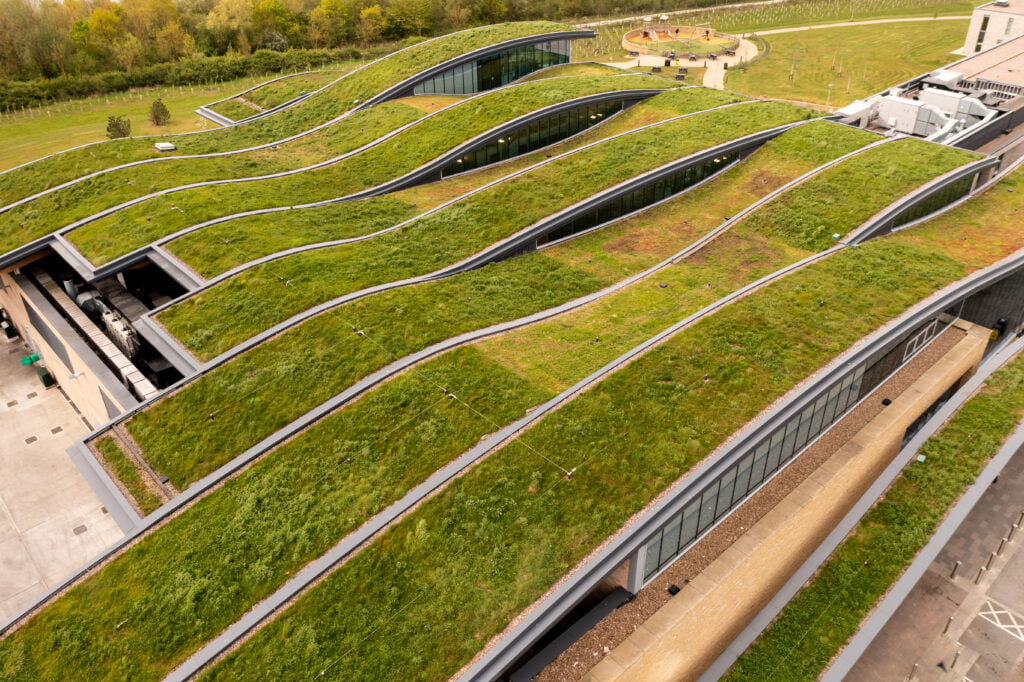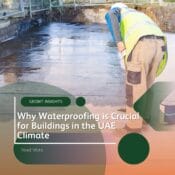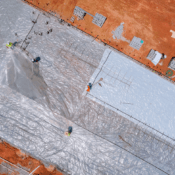
Top Waterproofing Techniques for Buildings in UAE: A Comprehensive Guide
Waterproofing is a critical aspect of construction and maintenance, especially in the UAE, where the climate poses unique challenges. With high temperatures and occasional heavy rains, effective waterproofing techniques are essential to protect buildings from water damage and ensure longevity. This comprehensive guide explores the top waterproofing techniques suitable for buildings in the UAE, providing insights into their benefits and applications.
1. Cementitious Waterproofing

Cementitious waterproofing is one of the most common and straightforward methods used in residential buildings. This technique involves applying a cement-based mixture to surfaces that require protection against water ingress.
Benefits
- Ease of Application: Cementitious materials are easy to mix and apply, making them suitable for both professional contractors and DIY enthusiasts.
- Strong Bonding: This method provides excellent adhesion to concrete surfaces, ensuring a durable barrier against moisture.
- Mold and Mildew Resistance: Cementitious waterproofing effectively prevents the growth of mold and mildew, which can be a significant concern in humid environments.
Applications
Cementitious waterproofing is ideal for wet areas such as bathrooms, kitchens, and basements. It can also be used in commercial applications, including dams and water treatment facilities, due to its robust nature and resistance to water pressure.
2. Liquid Applied Membranes

Liquid applied membranes (LAM) are a versatile waterproofing solution that consists of a liquid polymer that forms a seamless, flexible membrane upon application.
Benefits
- Flexibility: LAM can accommodate structural movements and is ideal for surfaces with complex shapes.
- Seamless Application: The liquid form allows it to fill cracks and gaps, providing comprehensive coverage.
- UV Stability: Many liquid membranes are designed to withstand UV exposure, making them suitable for the UAE's intense sunlight.
Applications
This method is particularly effective for roofs, balconies, and terraces. An example of its use in the UAE is the waterproofing of the Dubai Mall's roof, which protects against water damage while ensuring aesthetic appeal.
3. Bituminous Coating

Bituminous waterproofing involves the application of a bitumen-based product, which can be either a liquid or a sheet membrane. This method is renowned for its durability and effectiveness in preventing water ingress.
Benefits
- High Resistance: Bituminous coatings are highly resistant to water, making them suitable for areas prone to flooding.
- Cost-Effectiveness: This method is often more affordable than other waterproofing solutions, providing a good balance between cost and performance.
- Versatility: Bituminous coatings can be applied to various surfaces, including concrete, metal, and wood.
Applications
Bituminous waterproofing is commonly used for flat roofs, foundations, and below-grade applications. It is particularly effective in areas where water pooling is a concern.
4. Polyurethane Liquid Membrane

Polyurethane liquid membranes are a popular choice for waterproofing due to their flexibility and durability. This method involves applying a liquid polyurethane product that cures to form a strong, elastic membrane.
Benefits
- Excellent Adhesion: Polyurethane membranes bond well to various substrates, ensuring a tight seal against moisture.
- High Flexibility: They can expand and contract with temperature changes, making them ideal for the UAE's fluctuating weather conditions.
- Long Lifespan: When properly applied, polyurethane membranes can last for many years, reducing the need for frequent maintenance.
Applications
This waterproofing technique is suitable for flat roofs, balconies, and terraces. Its flexibility makes it particularly effective in areas with high foot traffic or where structural movement is expected.
5. Green Roofing

Green roofing is an innovative approach that involves covering a roof with vegetation and soil. This method not only provides waterproofing but also offers additional benefits such as insulation and stormwater management.
Benefits
- Natural Insulation: Green roofs help regulate indoor temperatures, reducing reliance on air conditioning and lowering energy costs.
- Stormwater Management: Vegetation absorbs rainfall, reducing runoff and the risk of flooding.
- Aesthetic Appeal: Green roofs enhance the visual appeal of buildings, contributing to urban greening efforts.
Applications
This technique is gaining popularity in the UAE, particularly in eco-friendly developments like the Dubai Sustainable City, where green roofs are integrated into the design to promote sustainability.
6. Injection Waterproofing
Injection waterproofing is a method used to seal cracks and joints in concrete structures. This technique involves injecting a specialized waterproofing material into the affected areas.
Benefits
- Targeted Application: Injection waterproofing allows for precise treatment of specific problem areas, making it an effective solution for localized leaks.
- Minimal Disruption: This method can be applied without extensive demolition or disruption to the surrounding structure.
- Long-Lasting Results: When properly executed, injection waterproofing can provide a durable solution to water ingress issues.
Applications
This technique is commonly used in basements, retaining walls, and other areas where water penetration is a concern.
7. Thermal Insulation and Waterproofing Systems
Combining thermal insulation with waterproofing is an emerging trend in the UAE. This integrated approach not only prevents water ingress but also enhances energy efficiency.
Benefits
- Energy Savings: By reducing heat transfer, these systems can lower energy costs associated with cooling.
- Extended Roof Lifespan: Proper insulation can reduce thermal stress on roofing materials, prolonging their lifespan.
- Comprehensive Protection: This dual approach addresses both moisture and temperature concerns, making it particularly effective in the UAE's climate.
Applications
Thermal insulation and waterproofing systems are suitable for all types of roofs, especially flat and low-slope roofs commonly found in commercial buildings.
Conclusion
Effective waterproofing is crucial for protecting homes in the UAE from water damage and ensuring structural integrity. With various techniques available, homeowners and builders can choose the most appropriate solution based on their specific needs and conditions. From traditional methods like cementitious waterproofing to innovative approaches like green roofing, investing in quality waterproofing can lead to significant long-term benefits, including reduced maintenance costs and enhanced property value. As the construction industry continues to evolve, staying informed about the latest waterproofing technologies and techniques will ensure that homes remain safe and secure against the elements.



